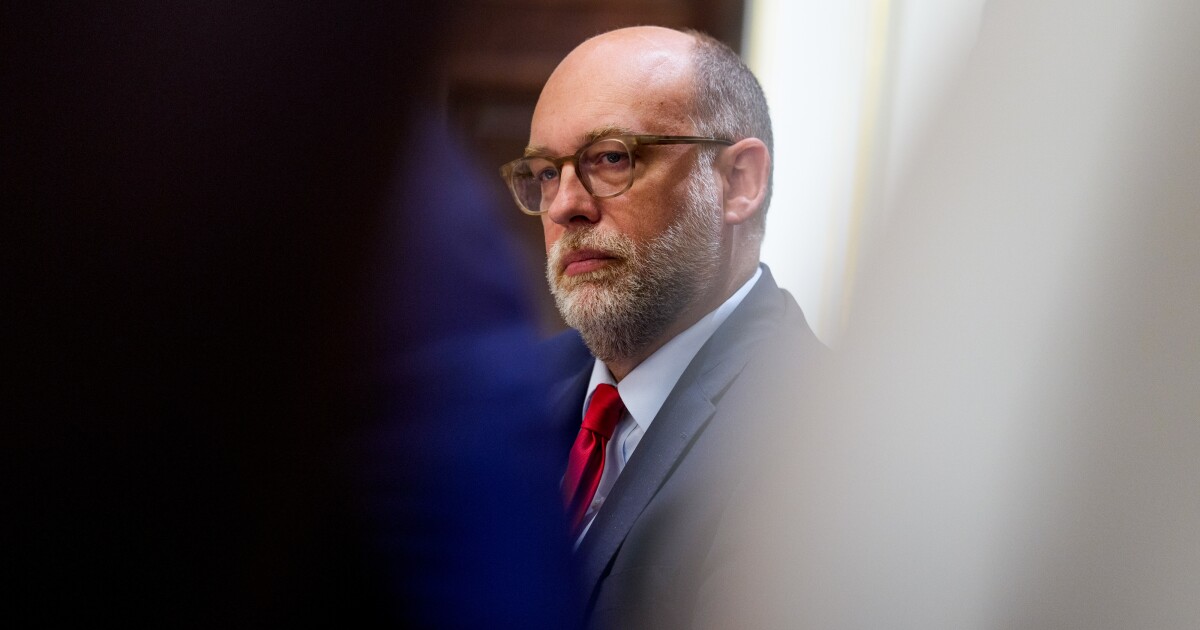
At an investor day last December, the Bank of Nova Scotia unveiled a fresh business plan.
With a new CEO at the helm, the Toronto-based lender that's billed itself as Canada's "most international bank" said some of its investments in Latin America weren't paying off as expected. Returns on capital lagged, financial targets had been missed and shareholder value was subpar.
As a result, Scotiabank would reallocate 90% of its excess capital from underperforming markets such as Colombia to developed regions — its home base of Canada as well as Mexico, the Caribbean and the United States — as a means to achieve more sustainable, less volatile earnings.
At the time, Scotiabank executives didn't offer many specifics about the company's growth plans for the U.S., where it generates 11% of its earnings, mostly through capital markets and corporate banking.
But this month,
It's a sharply different approach from other Canadian banks that have expanded in the U.S. — one that involves more caution and less regulatory scrutiny, some analysts said. TD Bank Group, Bank of Montreal and Royal Bank of Canada all expanded into the U.S. market by acquiring American banks, and each of them have since established substantial U.S. operations.
"My personal view is that this is … a cautious approach," Shokhrukh Temurov, an analyst at Morningstar DBRS, said about Scotiabank's move. "They don't have much experience doing (mergers and acquisitions) in the U.S. They don't want to invest a lot in a new strategy when the environment isn't favorable. And there's less regulatory scrutiny compared to a larger deal."
Among the four largest Canadian banks, Scotiabank has the smallest U.S. presence. It lacks a branch footprint here, so its brand awareness among American consumers is likely low compared with peers, and it doesn't have much of a foothold in U.S. middle-market banking.
Instead, it focuses on corporate lending, investment banking, debt and equity underwriting, fixed income, currency and commodities, equities sales and trading and collateral management.
Scotiabank operates in the U.S. as Scotia Holdings USA, maintains a principal office in New York City and has two other offices in Houston and San Francisco, according to its website. Both Scotia Capital USA and Scotia Financing USA operate under the Scotia Holdings franchise.
While its Canadian counterparts were investing in the U.S., Scotiabank was focusing on other parts of the world, including Asia, Europe and Latin America. In the past decade, it has scaled back much of its ambitions in Asia and Europe while zeroing in on Latin America.
But difficult economies in certain countries, including Colombia, have made executives rethink the company's presence in those regions. At the December investor day, Scott Thomson, who became Scotiabank's CEO in February 2023, said the company is "behind on winning primary relationships" and has been "overly focused on market share and volume metrics" in international banking.
In 2023, Scotiabank's full-year net income declined by more than 26% from the prior year, in part because provisions for credit losses more than doubled year over year, according to its quarterly report from last year's fourth quarter.
The new strategy would center around North America, taking advantage of the trade connectivity between Canada, Mexico and the U.S., Thomson told shareholders in December. Directing capital into those markets instead of emerging regions would be a critical step, he added.
"This is a fundamental shift in strategy, allocating incremental capital increasingly towards stable, high-return markets in North America," he said.
During an August 12 call with analysts to discuss the KeyCorp investment, Thomson said the company spent a lot of time thinking about how to best deploy more capital into the U.S. KeyCorp was attractive because of its wholesale capital markets business, "strong" commercial bank and growing wealth platform, along with being a "low-risk, low-cost" option in North America, he said.
"We want to grow the bank in the areas that we talked about at the investor day, and the U.S. is a key component of our strategy," Thomson said. "This [puts] us well on the path to executing on that, and it shows that we can increase [the] earnings power of the company."
Attaching itself to Cleveland-based KeyCorp would be a way to deepen its existing reach in the U.S. in areas such as capital markets, payments and wealth management, Temurov said.
"Those aren't highly capital-intensive areas, and that's what Scotiabank wants under its new strategy," Temurov said. "They want to grow capital-light businesses like wealth management."
The plan calls for Scotiabank to invest in KeyCorp in two phases. Pending regulatory approval, the first investment would close in the fourth quarter of this year and result in a 4.9% equity stake. The second investment would close next year and increase Scotiabank's stake to 14.9%.
Once that milestone is reached, Scotiabank will have the right to appoint two people to Key's board of directors. As part of the deal, Scotiabank agreed not to increase its stake above 19.9% for at least five years, which limits its ability to buy KeyCorp in full anytime soon.
The deal includes some risk, but it carries "low execution risk" and offers a "capital-efficient way to add U.S. earnings," Ebrahim Poonawala, an analyst at Bank of America Securities, wrote in a note to clients.
Still, there's a question mark about how successful the company's strategy will be, Poonawala added. The U.S. is a competitive market, and there's always a chance that KeyCorp will perform weakly, driving down Scotiabank's U.S. revenues, he said.
Maria-Gabriella Khoury, an analyst at Fitch Ratings, agreed. While it's "very improbable" that KeyCorp's results would cause Scotiabank to lose its investment, it's still a risk, she said.
"It was a surprise in terms of deciding to take a minority stake in a bank," she said. "But when we look at the reasoning, it does make sense."



